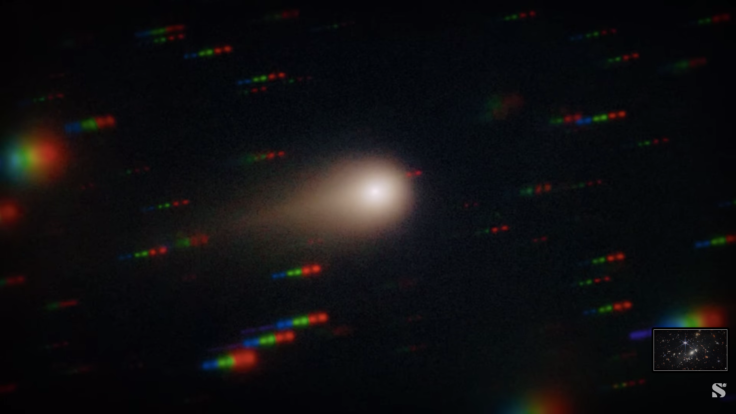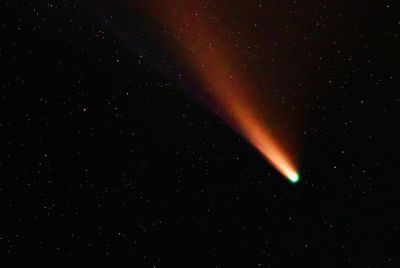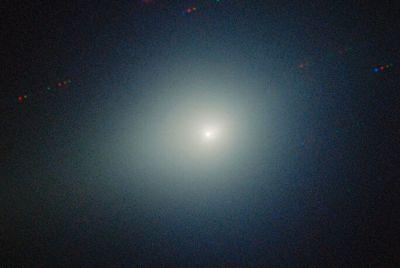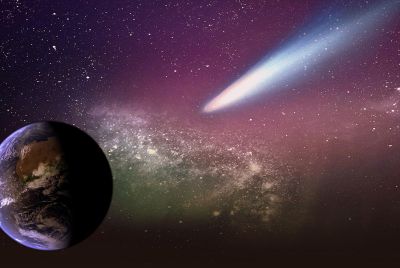3I/ATLAS Mystery: Comet 'Spurted Ahead' of Orbit, Erupts From Behind Sun Early
Astronomers say the interstellar comet 3I/ATLAS, only the third of its kind ever detected, has released a massive jet of gas and dust earlier than expected.

Comet 3I/ATLAS, the third confirmed interstellar visitor to enter our Solar System, has astonished astronomers after erupting from behind the Sun earlier than predicted, spewing an enormous jet of gas and dust.
The outburst—captured by telescopes in Tenerife and Hawaii—suggests the object has 'spurted ahead' of its expected orbital path, baffling scientists tracking its volatile activity.
According to Space.com, the alien comet's early eruption may reveal new clues about chemical processes beyond our Solar System, just days before its closest approach to the Sun on 29 October 2025.
Early Eruption Surprises Astronomers
Images from the Two-Metre Twin Telescope in Tenerife and the Gemini North Telescope in Hawaii show the comet ejecting a massive 10,000 km plume of dust and gas aimed toward the Sun.
Researchers believe the violent outburst was triggered by solar heating of subsurface ices, which rapidly vaporised and escaped into space.
- The plume's structure suggests volatile-rich material overreacting to sunlight.
- The European Southern Observatory (ESO) confirmed the jet's expansion, calling it 'a rare example of high-energy sublimation in an interstellar body.'
3I/ATLAS is far more active than expected, behaving unlike any known comet in our system.
'Spurted Ahead' of Predicted Orbit
Though 'spurted ahead' is not a scientific term, astronomers say the phrase fits the comet's unexpected acceleration and enhanced activity curve.
A preprint study on arXiv indicates the comet's dust emission rate rises steeply as it nears the Sun, consistent with hyperactive volatile behaviour.
Data from the James Webb Space Telescope (JWST) also revealed an unusually high carbon dioxide-to-water ratio—eight to one—among the highest ever observed in a comet.
Such a composition suggests 3I/ATLAS formed in an ultra-cold region around another star, offering a direct look at alien chemistry.
Hidden Behind the Sun—But Not for Long
Currently, 3I/ATLAS has disappeared from Earth's view, obscured by the Sun's glare. Ground-based observations are suspended until it re-emerges in late November.
However, space-based instruments continue tracking it. The Trace Gas Orbiter aboard the ExoMars mission recently captured the closest images ever recorded of an interstellar comet from Mars orbit, revealing intricate dust-jet structures.
Even out of sight, 3I/ATLAS is rewriting scientists' understanding of interstellar ice dynamics.
A Rare Glimpse Into Alien Origins
'This is only the third interstellar comet we've ever studied,' astrophysicist Jason Wright told Newsweek. 'It's like looking directly at the chemical fingerprints of another star system.'
Unlike its predecessors—ʻOumuamua (2017) and 2I/Borisov (2019)—which dimmed after discovery, 3I/ATLAS is brightening as it nears perihelion.
Dr Christine Moreno of Madrid's Complutense University compared the eruption to 'watching a traveller from a distant world suddenly unpack before arrival.'
3I/ATLAS's behaviour could redefine what scientists know about how interstellar objects form and evolve.
Conclusion
As 3I/ATLAS vanishes behind the Sun, astronomers prepare for an intense observation campaign upon its return.
The comet's early eruption and volatile nature offer an unprecedented window into matter born beyond our star, potentially transforming our understanding of how cosmic chemistry travels across galaxies.
When it re-emerges in November, the world will be watching for what secrets this interstellar visitor reveals next.
© Copyright IBTimes 2025. All rights reserved.





















